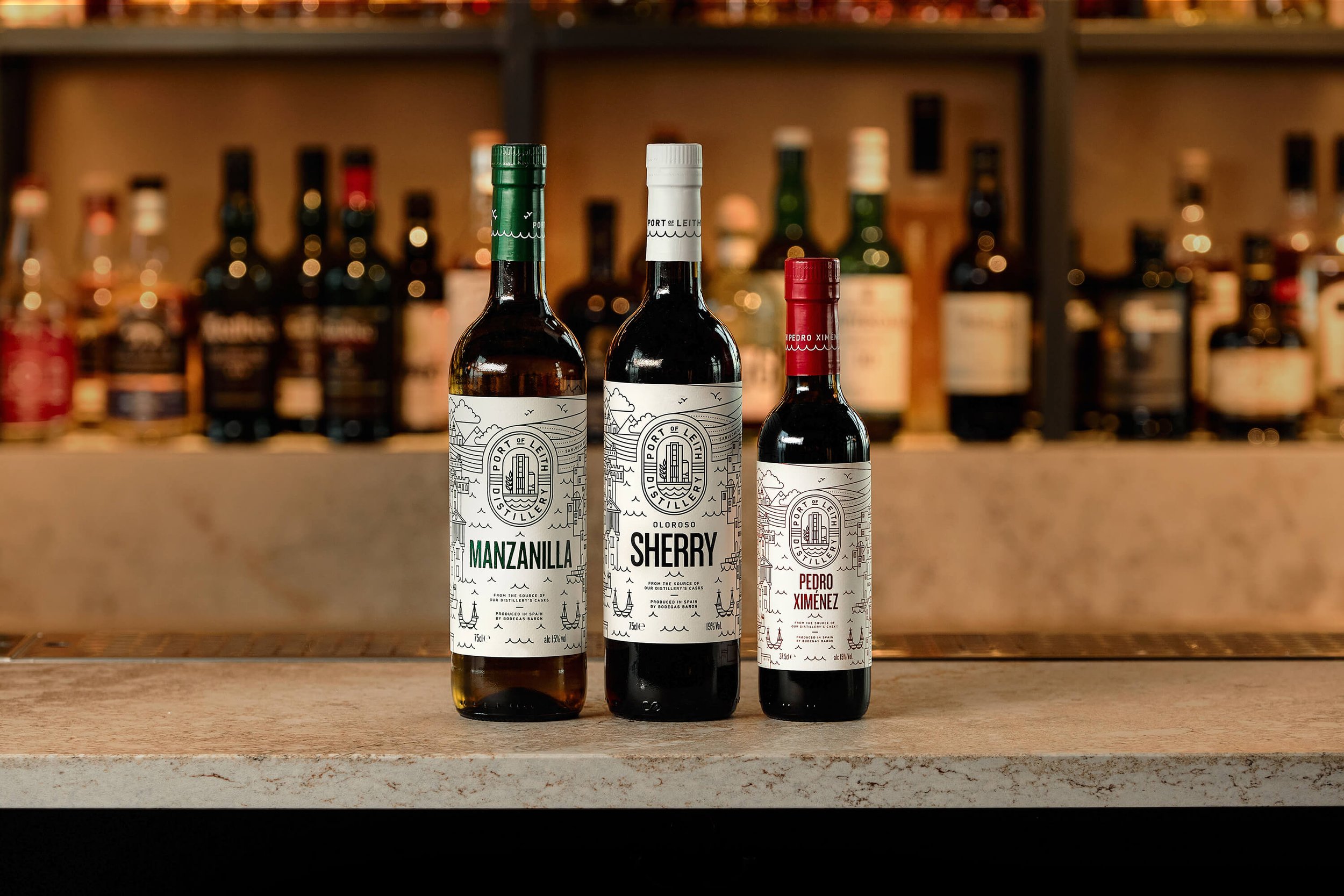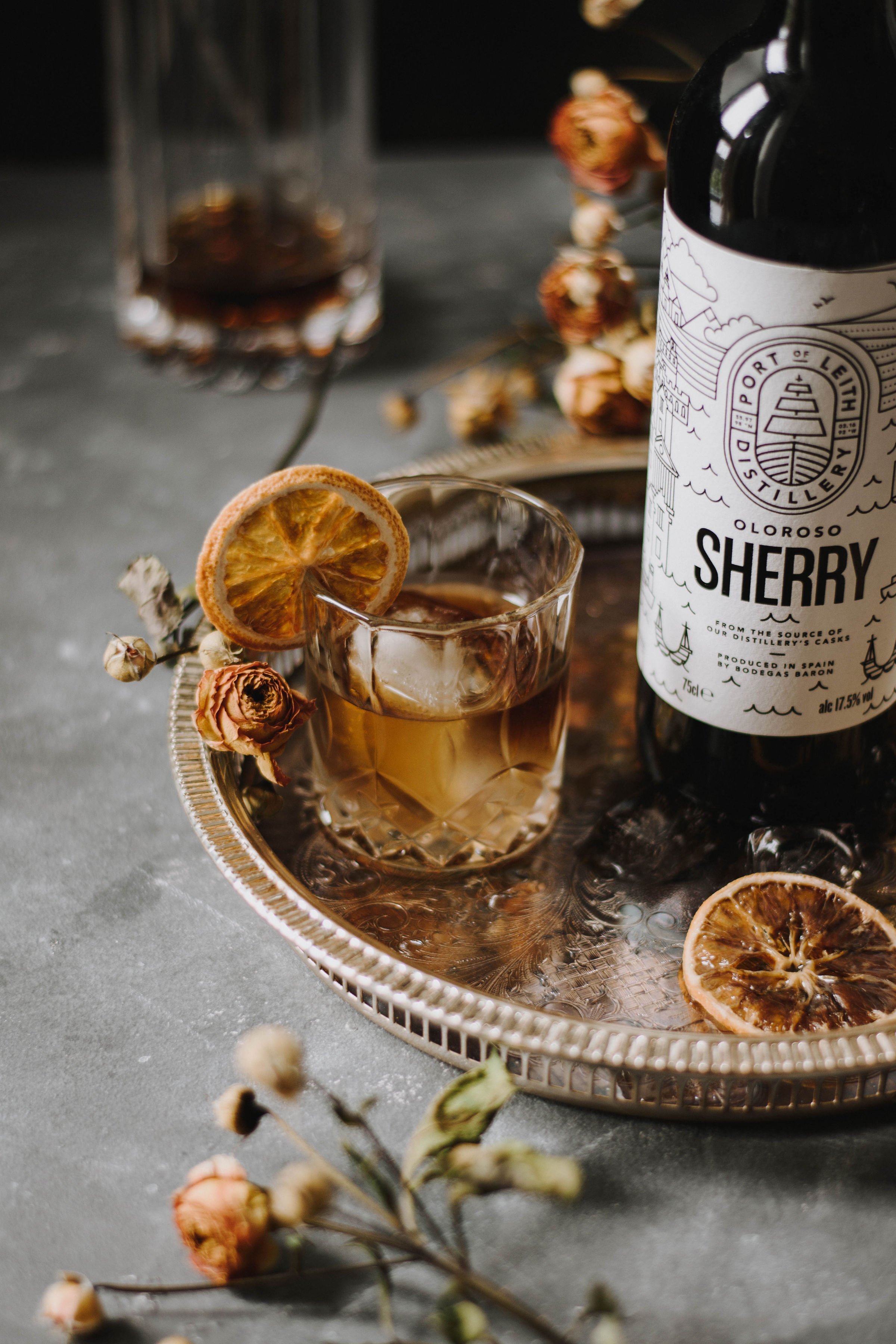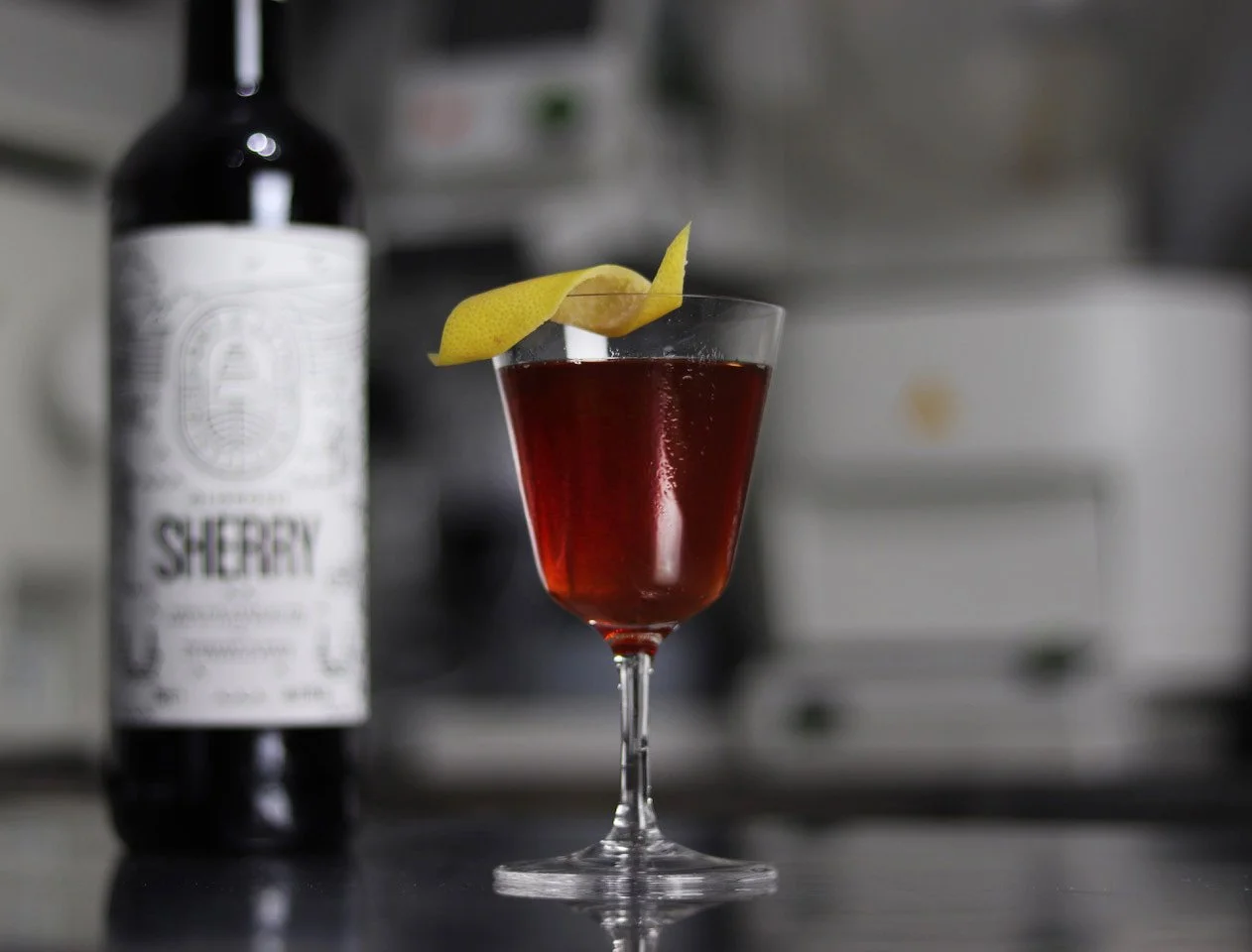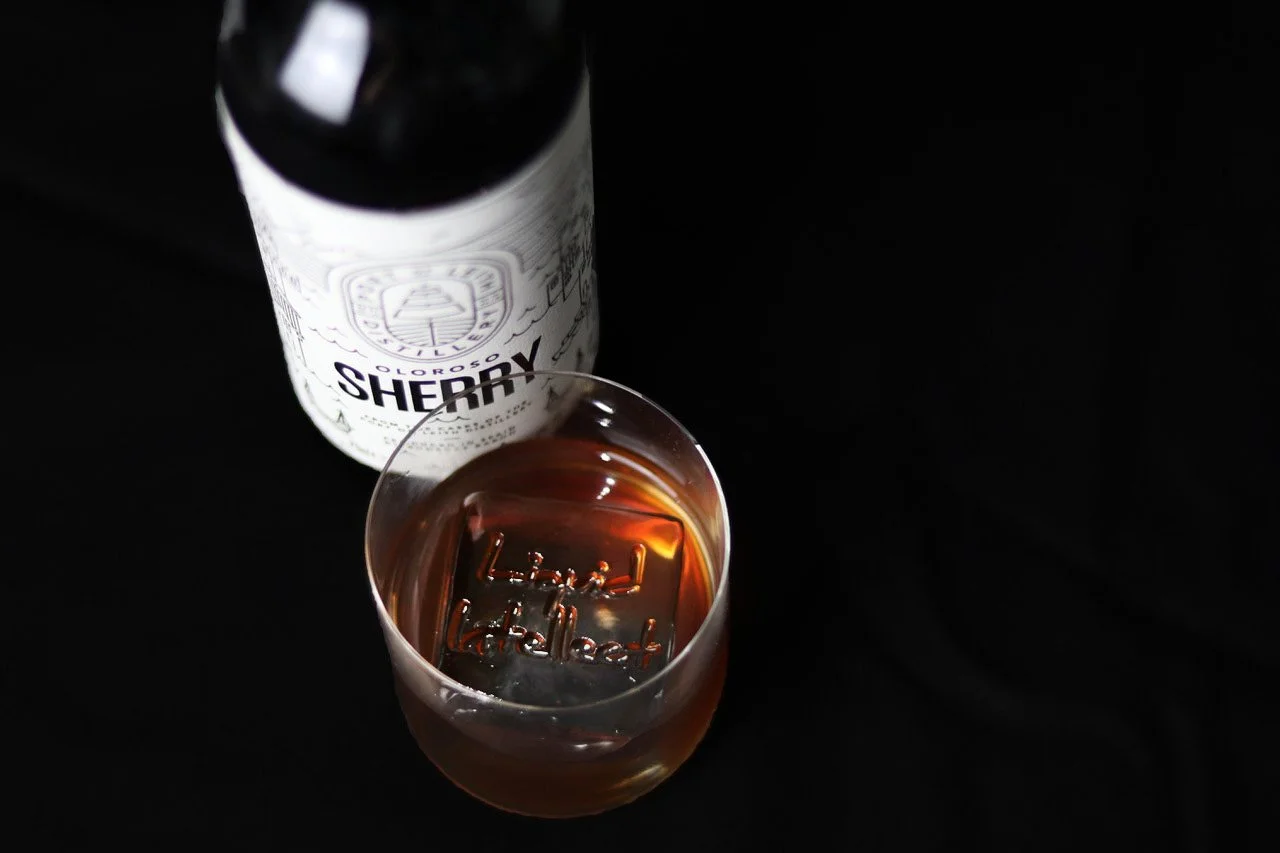
THE PRODUCER
The Sherry
-

The Manzanilla
Produced in the coastal town of Sanlucar de Barrameda in Spain's sherry triangle. Manzanilla is made in the same style as Fino sherry; bone dry with notes of fresh citrus, nuttiness and doughy flavours that linger on your palate.
-

The Oloroso
Oloroso is fortified to a strength of 17% to stop the development of flor and exposes the wine to air. This produces a heavier, more structured and complex wine that’s bursting with dried fruits, complex oak and a balanced sweetness with hints of spice.
-

The Pedro Ximénenz
Pedro Ximénenz (or PX) is a naturally sweet style of sherry and is more like a dessert wine. It has incredibly rich flavours of raisins, figs and prunes, with deep, beguiling aromas of coffee and chocolate on the nose.
The History
-
Edinburgh’s Port of Leith was once the epicentre of Scotland’s whisky trade.
Casks of sherry arriving into the harbour would be decanted into locally manufactured bottles. Whisky merchants then bought up the empty casks to store their spirit in the dozens of bonded warehouses that once lined the shore. They soon discovered that it transformed their spirit and a major innovation in whisky production was born on our doorstep.
-

The palomino grapes for sherry are grown in vineyards in Jerez in the South of Spain. They are fermented like any other wine.
-

The wines are then fortified with grape spirit and matured in 'Solera' warehouses in the towns of Jerez and Sanlúcar de Barrameda.
-

Historically, full casks of sherry were shipped to Leith and then decanted into locally-made bottles. Whisky merchants then used the empty casks to mature their spirit.
-

They realised customers came back for the sherry cask-matured whisky. A new tradition in Scotch production was born, and it began in Leith.

THE COCKTAILS














